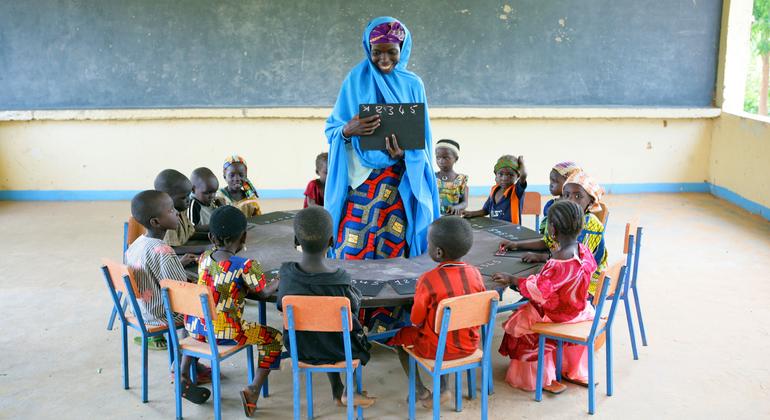The cost of building a school in Africa
Building a school in Africa is a vital project that promotes social and economic development. The cost of building a school varies based on several factors, including Location, school size, type of infrastructure, and materials used. This article provides a comprehensive analysis of the cost of building a school in Africa, highlighting the influencing factors, practical examples, how to reduce the cost and increase efficiency.
Factors affecting the cost of building a school
Geographical location
Land costs vary greatly between rural and urban areas. In rural areas, the cost of land is usually lower, which can be a significant advantage in terms of reducing the initial cost of construction. However, this advantage may be diminished due to other challenges associated with construction in rural areas.
In rural areas, the costs of transporting materials and equipment to the construction site may be much higher due to the remoteness of distances and the lack of road infrastructure. It may require the use of special transport or incur additional costs for transporting materials over unpaved roads.
The availability of basic infrastructure such as roads, electricity, and water is one of the vital factors that affect the cost of building a school. In regions that lack such infrastructure, additional investments may be required to provide these services. For example, the construction of a school in an area that lacks electricity grids may entail the installation of generators or the search for Alternative Energy Solutions, which increases the overall cost.
School size and layout
The size of the school depends on the number of required classes. An increase in the number of classrooms means an increase in construction materials, educational equipment, school furniture. Each additional semester adds to the total cost of construction in terms of materials, labor and time.
The presence of additional facilities such as libraries, scientific laboratories, sports grounds increases the cost of construction. Such facilities need special equipment and additional space, as well as meeting safety and quality standards. For example, the construction of a scientific laboratory requires the provision of certain equipment such as laboratory tables, safety devices, ventilation systems, which increases the overall cost.

Materials used in construction
The use of domestic materials can significantly reduce the cost compared to the use of imported materials. Domestic materials are often cheaper and easier to transport. However, it must be ensured that these materials meet the required quality and durability standards to ensure the sustainability and safety of the building.
Imported materials may sometimes be necessary to ensure quality or to meet special design requirements. But it comes at a higher cost that includes import duties, shipping, and storage. The balance between quality and cost is the key to the decision in choosing materials.
Technology and methods of construction
Advanced construction techniques such as prefabricated construction may be more expensive at first but they save time and reduce labor costs in the long run. For example, the use of prefabricated building modules can significantly reduce the duration of construction, reducing labor and supervision costs.
The adoption of advanced technology in the design and implementation of the project can contribute to improving efficiency and reducing errors, which ultimately reduces the overall cost. The use of advanced software for Project Management and resource planning can contribute to the achievement of this goal.
Labor costs
Labor costs vary significantly between regions. In some regions, labor costs may be high due to a shortage of skilled labor or the need to bring it from other regions. This can increase the total cost of construction.
In areas with a lack of skilled labor, it may be necessary to recruit workers from other regions or even from outside the country. This increases costs due to the need to provide housing, mobility, nutrition to hired workers.
Training and supervision costs
Training local workers in modern construction techniques and working methods can increase the cost but contributes to building the capacity of the local community. This investment in training can lead to an improvement in the quality of work and reduce the need for rework and repairs in the future.
The need for intensive supervision and quality control can increase the overall cost of the project. It requires the hiring of experienced supervisors to ensure that all aspects of construction adhere to the established standards. These costs include the wages of supervisors, engineers, management costs and ongoing monitoring.
The cost of building a school in Africa is influenced by many interrelated factors. With careful planning and selection of suitable materials and methods, costs can be reduced and efficiency increased. Focusing on using local materials, training local workers, and leveraging technology can contribute to a successful and sustainable project that meets the needs of the local community and contributes to improving the level of education in Africa.

Practical examples of the cost of building a school in Africa
Primary schools in Kenya
The school is designed to accommodate a large number of students in a suitable learning environment. Each classroom is equipped with benches, tables, blackboards and other basic teaching aids.
The library provides a collection of books and educational materials that promote reading and independent learning among students. The library is equipped with benches and tables for reading and research.
The sanitary facilities include separate toilets for boys and girls, observing hygiene and health standards to ensure a healthy and safe environment for students.
The construction of a primary school with these specifications contributes to the provision of basic education for children in the region, helping to reduce illiteracy rates and promote socio-economic development. The library encourages reading and the development of research skills, while the health facilities ensure a healthy environment for students, reducing absenteeism rates due to illnesses.
Secondary schools in Nigeria
The school is designed to meet the needs of a larger number of students at the secondary level. Each classroom is equipped with the necessary educational equipment to support a diverse secondary education curriculum.
Scientific laboratories provide the necessary tools and equipment for conducting experiments and practical activities in the fields of Physics, Chemistry, Biology. These laboratories contribute to the promotion of practical understanding of scientific subjects and encourage innovation and critical thinking among students.
The sports field allows students to practice various sports activities such as football, basketball, and athletics. Sport enhances the physical, mental and social development of students.
The library has a wide range of books and references that support the curriculum and broaden the horizons of students. Administrative facilities include offices for the school administration and teachers, which contributes to the effective management of the school.
The construction of a secondary school with these specifications enhances the chances of Secondary Education for young people, which increases their chances of higher education and employment. Scientific laboratories contribute to the development of scientific research and innovation skills. The sports ground and the library support the all-round development of students, while administrative facilities contribute to better management of the educational process.
A mobile School in Mali
Mobile classrooms consist of transportable modules that can be easily installed and disassembled. These units provide a flexible and adaptable learning environment to the changing needs of society.
Mobile educational equipment includes blackboards and other educational tools that can be easily moved between different locations, ensuring the continuity of education in remote and mobile areas.
Mobile sanitation facilities include portable toilets and hand washing equipment, ensuring a hygienic environment at all times and locations.
The mobile school helps to provide education to remote and mobile communities that may not have access to fixed schools. Mobile classrooms ensure the continuation of education even in changing conditions, such as seasonal commuting. Educational equipment and mobile health facilities ensure the provision of a healthy and appropriate learning environment for students, which helps in improving enrollment rates and retention of students in schools.
Building schools in Africa comes with different challenges and costs depending on location and needs. The examples given illustrate how these needs can be met in diverse and flexible ways that ensure the provision of education to children in various environments. By providing appropriate infrastructure, classroom facilities, and additional facilities such as libraries and laboratories, a positive long-term impact on education and social development in Africa can be achieved.
You can visit the AHAD website to find out more about the projects it offers
ALSO READ
WHAT THE FOOD BASKET CONTAINS IN AHAD
Join us in our message




